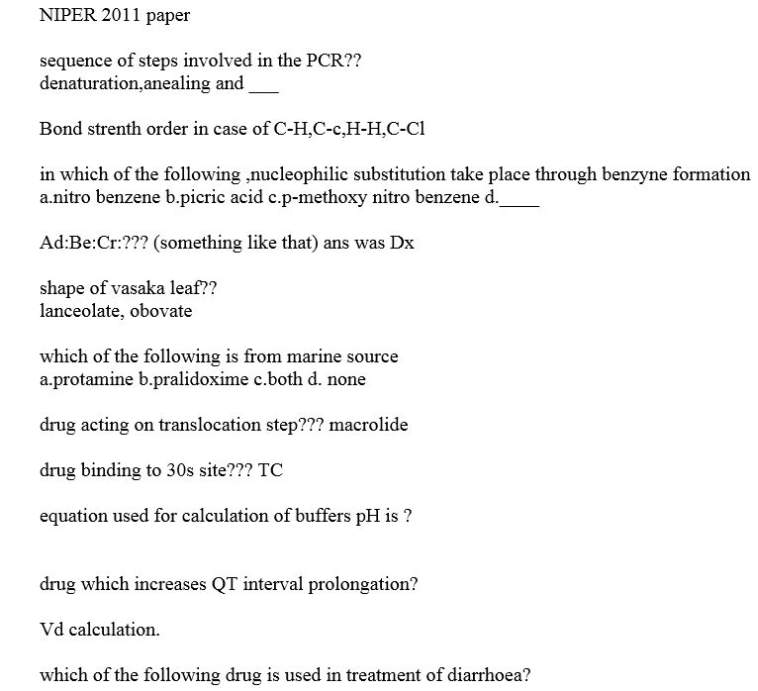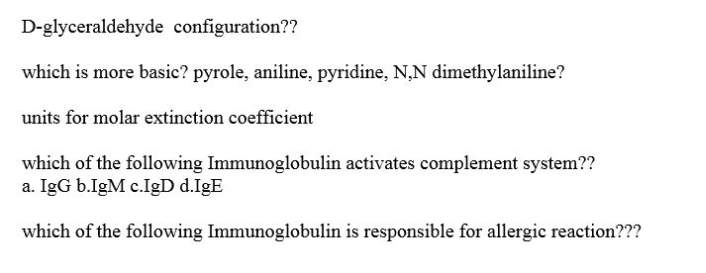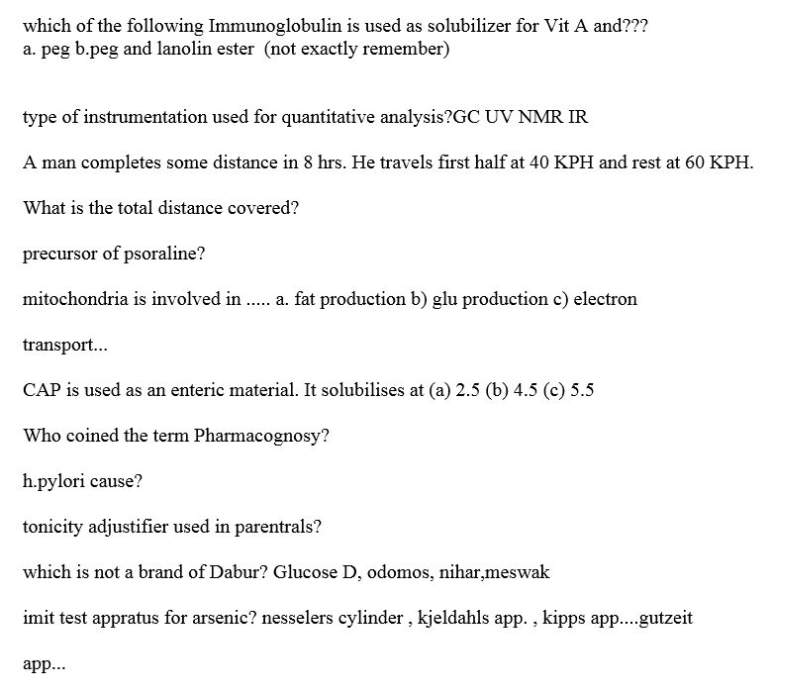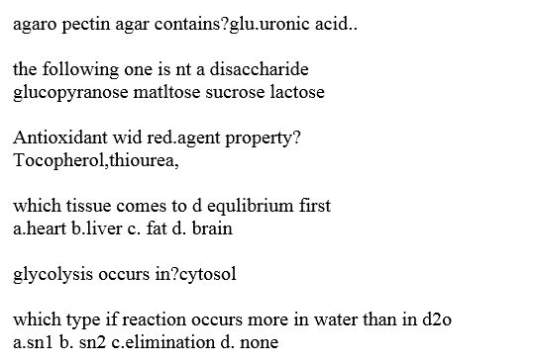|
#3
18th March 2015, 03:35 PM
| |||
| |||
| Re: NIPER Exam Paper
Hello user, here I am providing you with the exam paper and other stuffs: 1.Exam Paers: Niper exam papers     2. Exam syllabus: (a)Medicinal chemistry 1. IUPAC nomenclature, R and S nomenclature, E and Z isomerism, , 2. Conformations 3. Hybridization, aromaticity, Huckles rule reaction mechanisms- Electrophilic, Nucleophilic , SN1, SN2, Elimination E1 E2 etc. 4. Ester hydrolysis, Aac1 Aac2……all eight mechanisms(Jerry march) Markovnikoves rule, Bredts rule, Stereoselectivity, stereospecificity, regioselesctivity, chemoselectivity, chirality, stereochemistry, conformations, rearrangements, acids and bases. 5. Imine-enamine Tautamerism, keto-enol tautamerism, pericyclic reactions, racemic mixture, resolution methods. 6. Amino acids proteins, various methods for amino acid detection, Ninhydrin test, peptide sequencing, structures of amino acids, essential and nonessential amino acids, 7. Introduction to thermal methods of analysis like, TGA, DSC DTA etc. 8. Carbohydrates classification, osazone test, mutarotation, etc, 9. Various Heterocycles, Heterocycle synthesis, reactions,. 10. Introduction to Redox reactions 11. Spectroscopy: (basics specially): VVIMP topic. 12. NMR, and C-NMR ranges from Morrison & Boyd 13. Mass, Basic concepts about various peaks M+1, molecular ion, base peak etc. IR, Frequencies of various groups specially carbonyls. UV (finding the lamda max values) 14. Chromatography: detailed especially HPLC, HPTLC and other modern techniques and basic fundamental theory like van demeter equation, resolution, hetp etc. 15. Reaction kinetics, first second third and pseudo first order reactions, radiolabelling for determination of mechanism. 16. Common condensation reactions like aldol, claisen perkin , dickmenn, darzen etc. 17. Other reactions like cannizarros reaction, prins reaction, especially reactions of carbonyl compounds. (b)Natural Products: In natural products more stress should be given on phytochemistry part rather than pharmacognosy aspects but you should know aboutbiological sources and chemical constituents. 1. Methods of extraction, isolation and characterization of natural products. Various separation techniques used for isolation of natural products. 2. Biosynthetic pathways. 3. Primary metabolites, their examples. 4. Secondary metabolites, various classes of secondary metabolites (eg. Alkaloids, glycosides, tannins, lignans, saponins, lipids, flavonoids, coumarins, etc.). Here most imp. part is chemistry of these classes. 5. Important therapeutic classes: antidiabetics, hepatoprotectives, immmunomodulators, neutraceuticals, natural products for gynaecological disorders, anti-cancer, anti-viral (mainly anti-HIV), adaptogens etc. 6. Dietary antioxidants, Marine natural products, Plant growth regulators. 7. Fischer projection formulas. 8. Biological sources of important classes of natural products. (Selected ones only) 9. Standardization of natural products, analytical pharmacognosy. 10. What is difference between natural products and pharmacognosy ? 11. Some knowledge about types and preparation of ayurvedic formulatios like asava, arista etc. For examination updates and other notification you can visit the official site. Thank you more papers detail to atteched two pdf files................ |